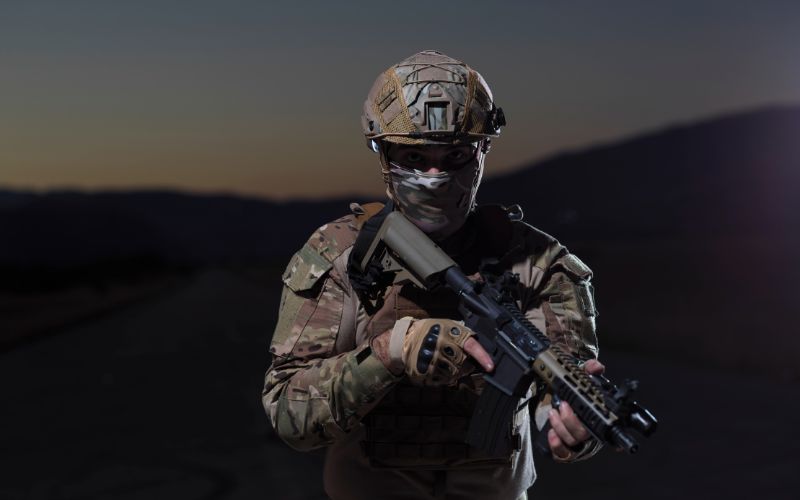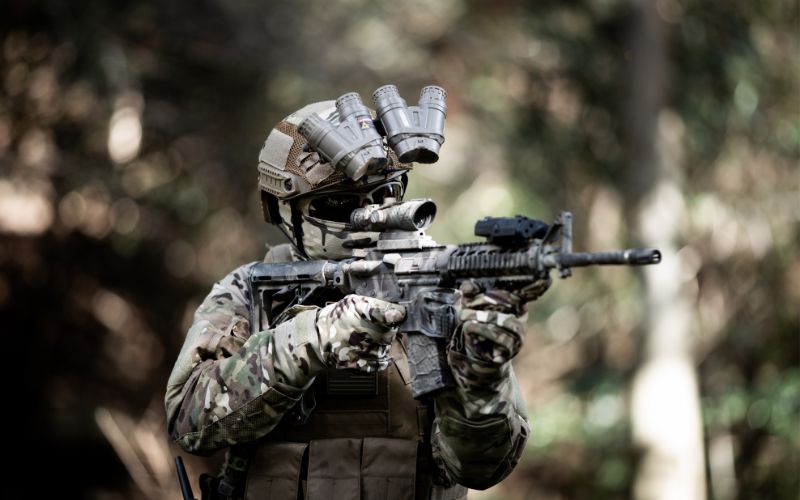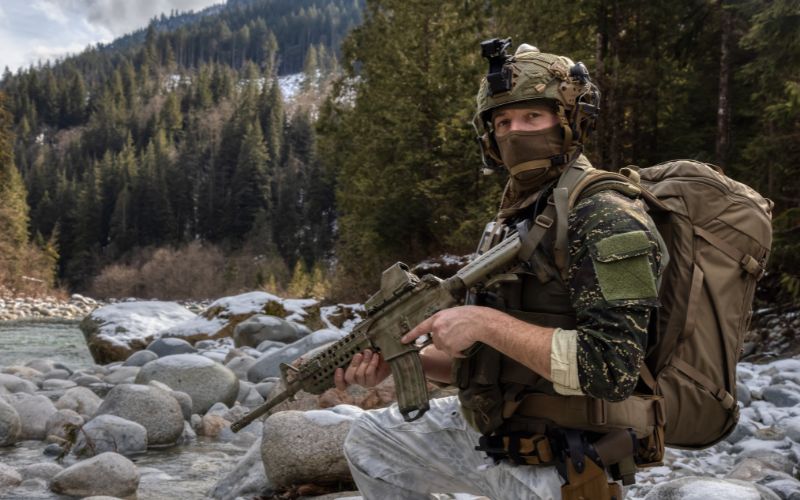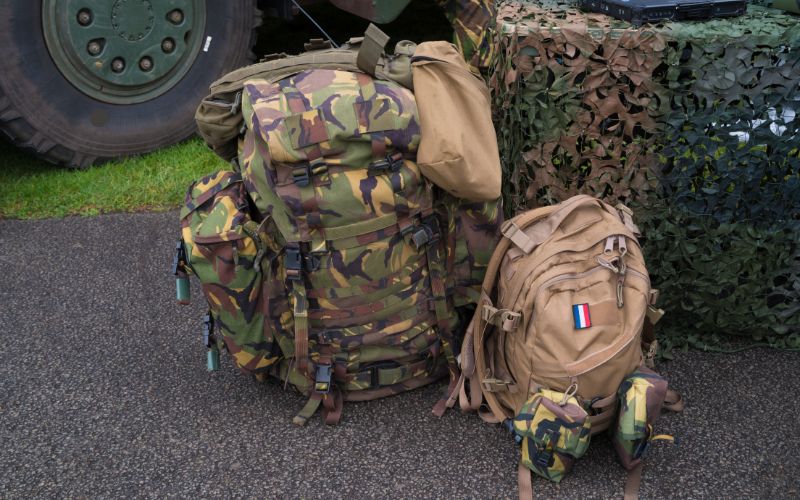Strategies For Lightweight Backpacking

Military backpacking requires a unique balance between efficiency, mobility, and preparedness. This is not a simple activity. The stakes are much higher, so everything carried must help with the mission or be essential for survival. On the other hand, carrying too much weight could drag movement, cause fatigue, and even become a liability in the field. Adopting military-specific lightweight backpacking will easily remove some of the weight without losing what is fundamentally important.
This guide contains valuable strategies for reducing tactical backpack weight. It covers the selection of multiple-use gear and the approach to streamlining a backpacking rig for tactical use.
Importance Of Lightweight Backpacking
In military situations, having a lighter load is more important than just comfort. A lighter pack helps you move faster and be more agile. It also makes it easier to cover distances in tough or dense terrain. With less weight, you stay energized and can function for longer periods. It also reduces the chances of having physical stress or injury, mainly if you need to rush or climb. A lightened approach optimizes your load, increasing endurance, mobility, and overall effectiveness in the field.
Gear Audit: Strategies For Lightweight Backpacking

The best steps towards reducing pack weight would involve good gear audits. Everything you bring should have a defined purpose and be essential to bringing along. To do this, organize your tactical gear into three categories:
- Essential
- Mission-specific
- Non-essential
Essentials such as first-aid kits, navigation tools, and water purification gear are not negotiable. Mission-specific items include specific tools or tactical equipment that may be unique to the environment or objectives of the mission. Lastly, non-essential items include redundant electronics or excessive clothing, which can be considered luxuries and left behind. This audit will allow you to eliminate unnecessary items, streamline your pack, and retain critical tools.
1. Choosing Ultralight Tactical Gear

Choosing the right tactical loadout can improve effectiveness. Select light and strong equipment. Modern materials like titanium and carbon fiber are options because they are lightweight and strong, comparable to some of the toughest materials on earth. Replacing heavy equipment can shed much of the weight.
For example, a bivy sack or tarp is a good substitute for a heavy tent, providing shelter without excessive bulk. A compact sleeping bag that compresses well provides warmth without taking up much space. Multipurpose tactical tools are another great idea—find a compact tool with a knife, scissors, and pliers in one item. Investing in ultralight tactical gear will pay off with a lighter, more versatile pack to handle rugged field conditions.
2. Weight-Friendly Water Management Techniques

You need water, but it can be heavy to carry. So, think smart about when and how much you bring along. There are often techniques to help you keep your weight up without increasing your hydration too much at any given time. While you do have to pack some water with you at all times, you use compact, portable water purification tablets or filters to obtain refills along the route.
A hydration bladder will improve efficiency by spreading water weight evenly across your tactical loadout and allowing for hands-free drinking. Collapsible water bottles are also useful because they take up minimal space when empty. Planning for reliable refill points and lightweight filtration systems can reduce water weight while ensuring access to safe drinking water throughout the mission.
3. Using a Modular Packing System
A modular packing system allows you to organize and access your gear efficiently. Breaking your pack into functional modules such as the medical, navigation, or food kits will easily give you the things you will need when needed. All these modules should have a single, lightweight, and water-resistant pouch.
All your medical supplies may fit in one easily accessible pouch, while all your maps and compasses could go in another. You can pre-pack food and rations into daily ration bags. You only need to dig one bag, so it’s a very streamlined system to pack and unpack, which minimizes bulk and gets what you need right when you need it. It works great in fast-moving or unpredictable environments where operating effectively and fumbling around for gear can make an organization’s difference.
4. Layering Clothing for Versatility
It is tempting to overpack clothing in variable climates, but with a good layering system, you can be ready for any change in weather without packing multiple outfits. Layering gives you the flexibility to add or remove clothing when needed.
The layers must be designed to begin with a moisture-wicking base layer that controls the body’s temperature and prevents sweat from reaching your skin. An insulating layer is the next, adding warmth when the conditions are cold; for example, this could be a lightweight, packable jacket. Finally, there’s an outer shell layer, which protects from rain and wind. The entire system should be comprised of light, quick-drying materials to minimize the bulk of the layers. This allows you to feel comfortable in all types of weather without overpacking for maximum comfort and mobility.
5. Streamlining Food and Nutrition
Food is needed to keep the energy levels up, but it also contributes to significant weight. Lightweight, calorie-dense food options allow you to keep your energy without the bulk of traditional rations. Dehydrated meals are lightweight and easy to prepare; they only need hot water. Protein bars, dried fruits, nuts, and jerky are compact, nutritious snacks that provide lasting energy.
Pack food in daily portions in lightweight pouches. This way, you’ll know how much you have for how many days. Powdered supplements like protein or electrolyte powders also meet your nutritional demands without much weight. Focus on high-calorie, lightweight options to keep energy levels up without burdening your backpack.
6. Lighten and Multiply Electronics

Using GPS and radios in military backpacking is essential but carries weight. Multitasking electronics should be selected without repetition. Tools that incorporate more than one purpose must be chosen. For example, a watch should contain GPS, timekeeping functions, and altimeter readings instead of using an electronic device solely for the GPS.
Compact and portable power sources, including solar chargers or small, lightweight power banks, are always on hand to power essential electronics without adding too much bulk to your bug-out bag. Prioritize essential devices and consider multipurpose options to streamline your electronics kit. Keeping electronics minimal and functional will add little weight but may eliminate important communication and navigation capabilities.
7. Packing for Space Optimization
How you pack is as important as what you pack. Efficient packing techniques help maximize space and distribute weight evenly. Compression sacks are particularly good for reducing the bulk of sleeping bags and clothes, so you can stuff more into a smaller space.
Heavy items should be centered behind your back to provide balance so as not to strain much, and you can stuff emptiness like socks into the boots so that nothing has wasted space. Hence, you do not feel any shift in weight by walking long distances, so all these little things stabilize the pack so much, and you find carrying even for long distances comfortable.
Conclusion
Lightweight military backpacking involves refining your load to carry only the most necessary, high-performance items. By carefully auditing your gear, investing in ultralight equipment, and packing efficiently, you can enhance mobility, conserve energy, and remain effective in the field. These strategies reduce pack weight and enable a more agile, efficient, and prepared approach to military operations.
Frequently Asked Questions
How do I choose the right lightweight backpack for military use?
Look for a modular, rugged backpack with load-carrying features for tactical use. MOLLE compatibility makes it easy to attach and remove pouches to customize the loadout based on mission requirements.
How do you manage water weight to ensure hydration?
You can choose to carry a hydration bladder with a lightweight water filter or purification tablets so you can carry only what’s needed and refill it along the way.
How do you keep cool under conditions with minimal clothing?
The base layer is a moisture-wicking, insulating, and outer weatherproof layer. Flexibility in all varieties of climates without too much extra clothing.

